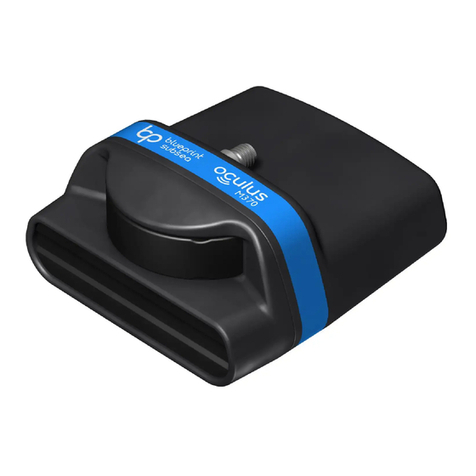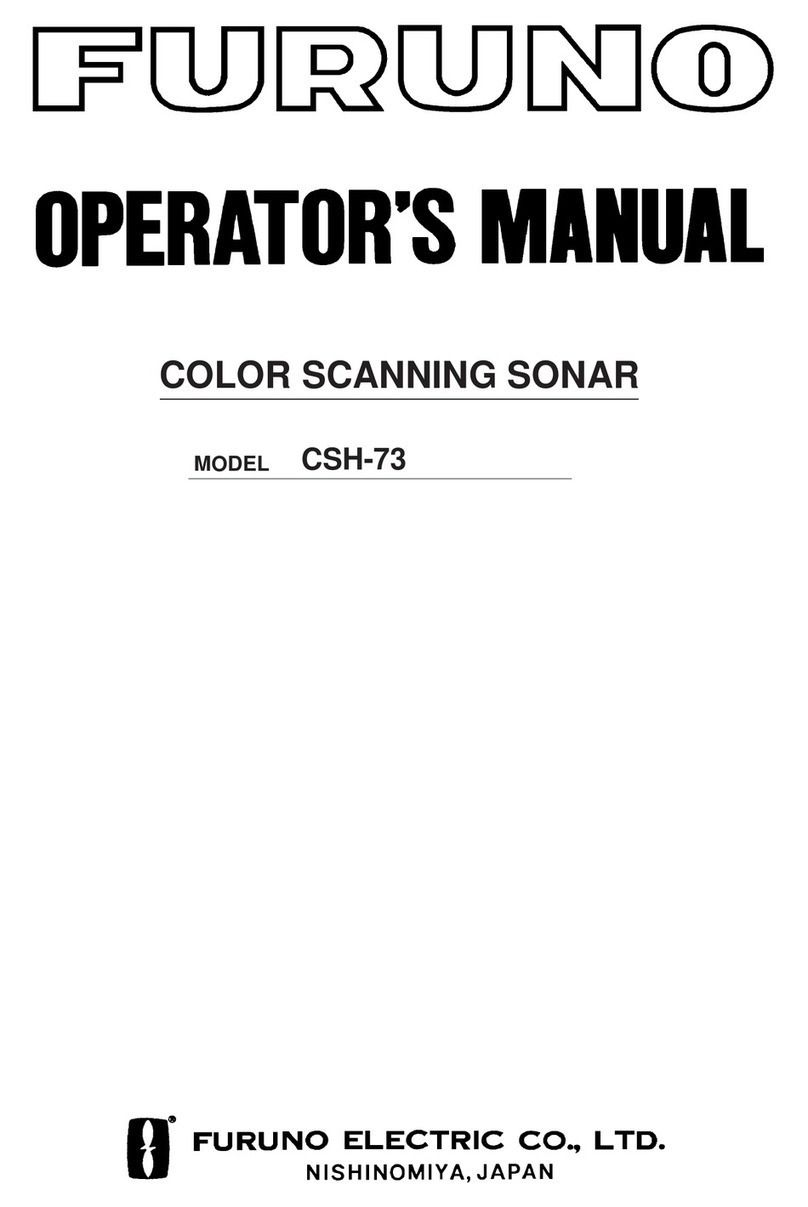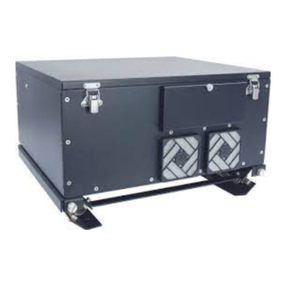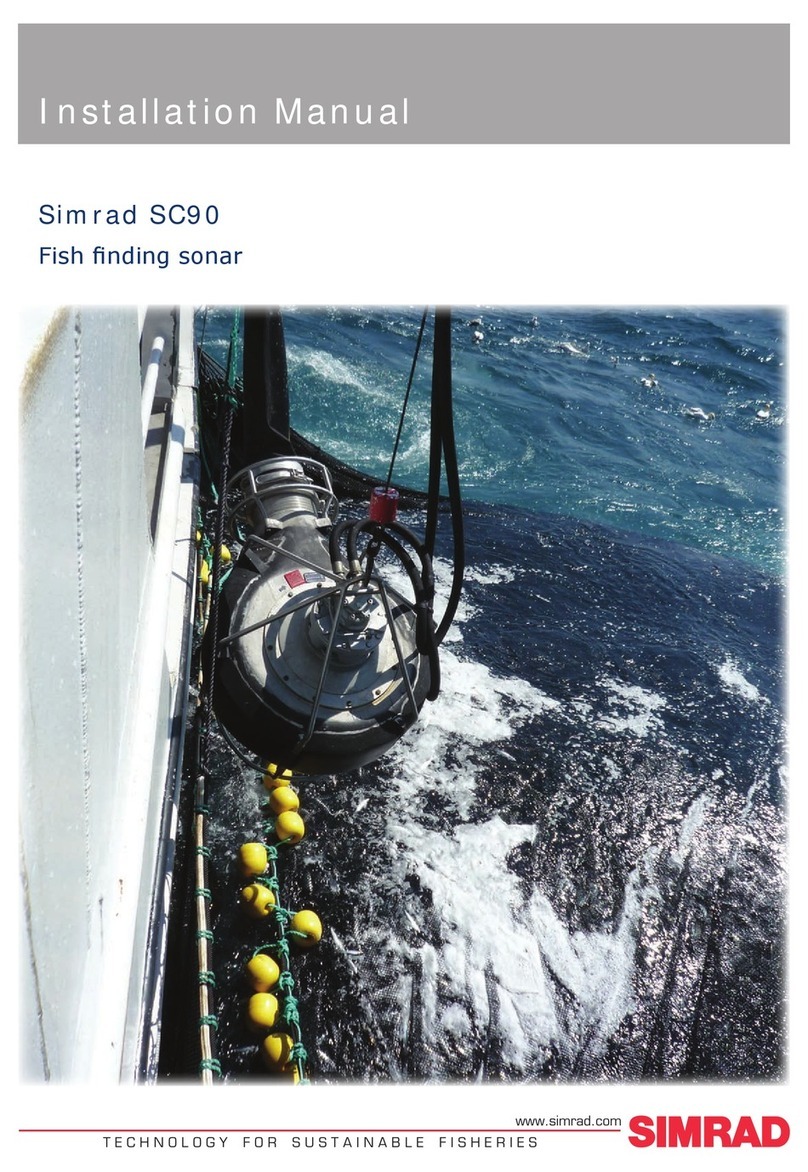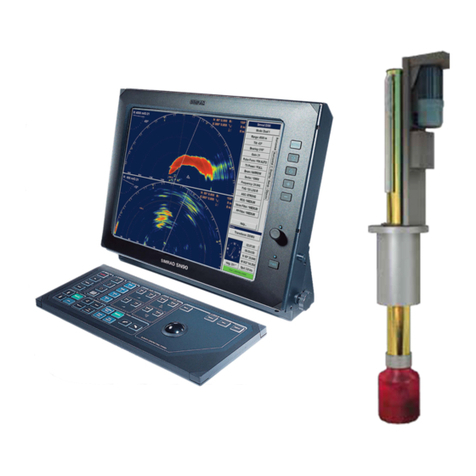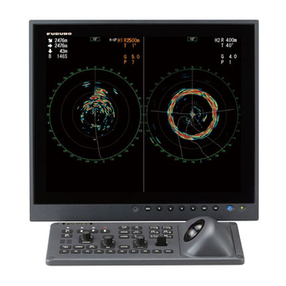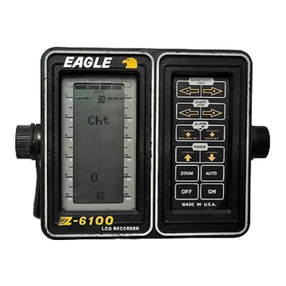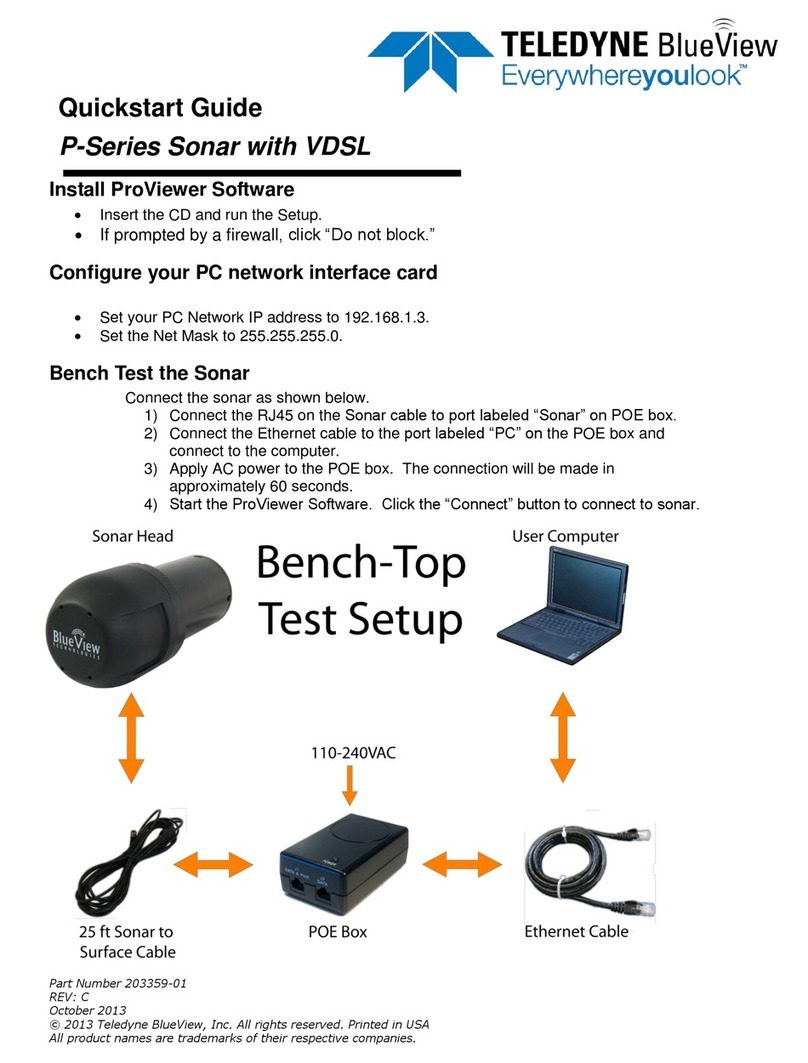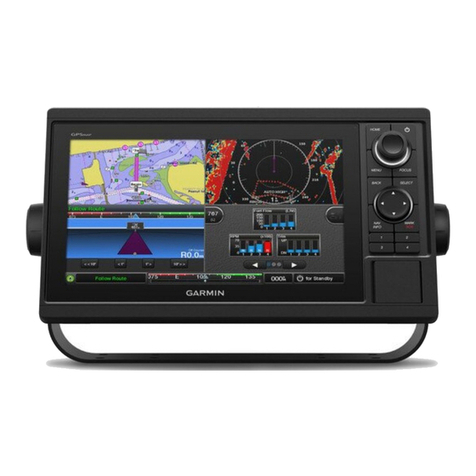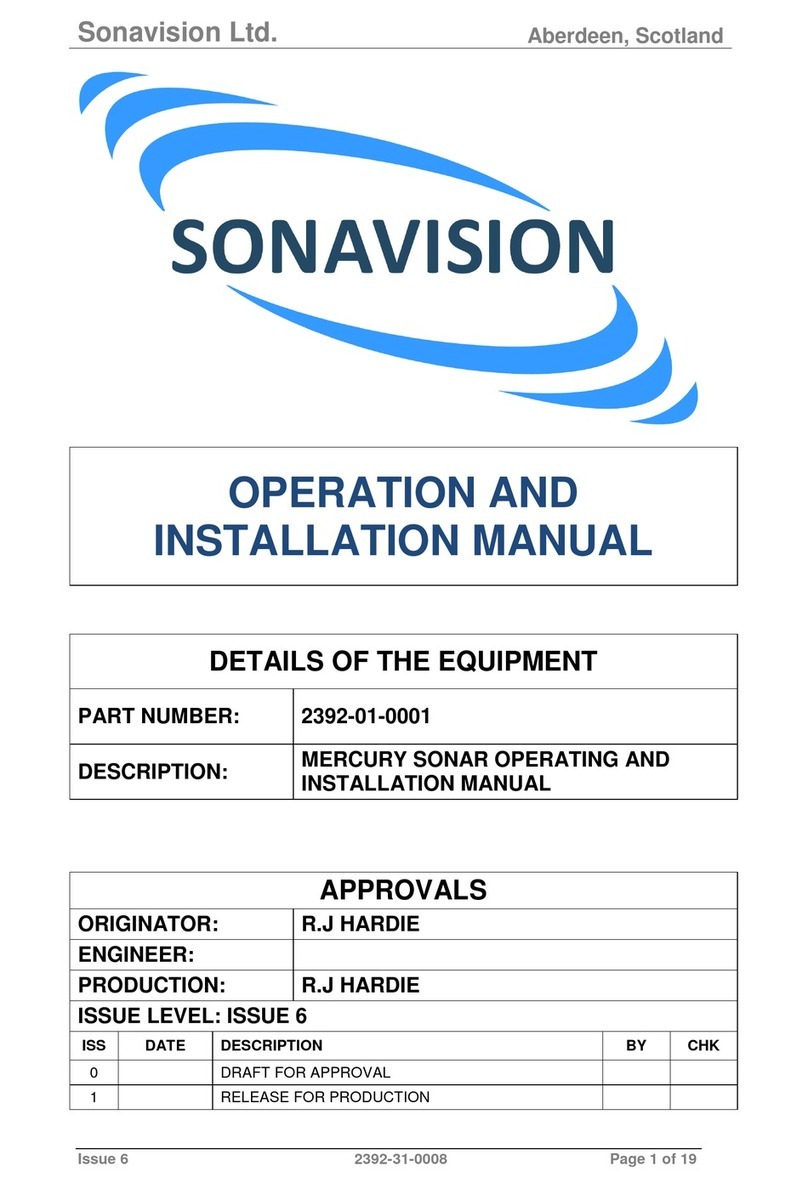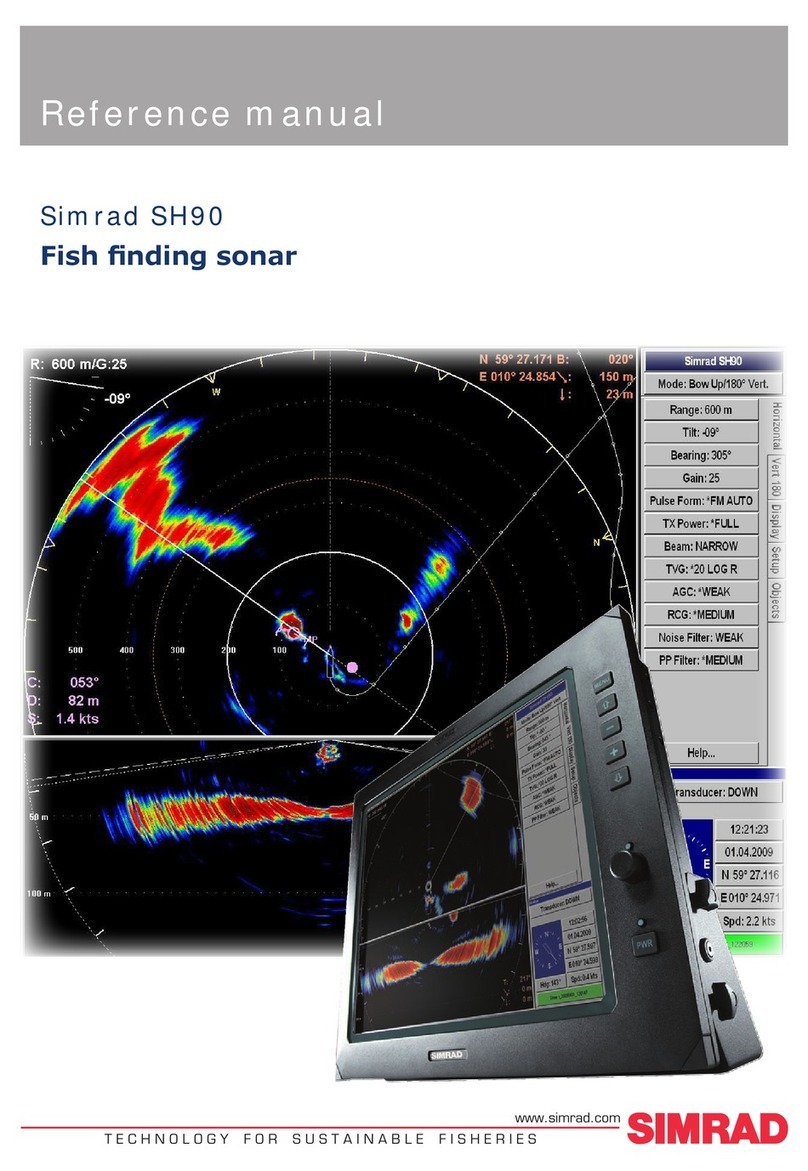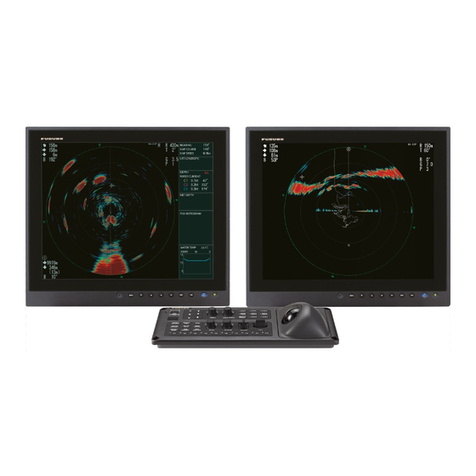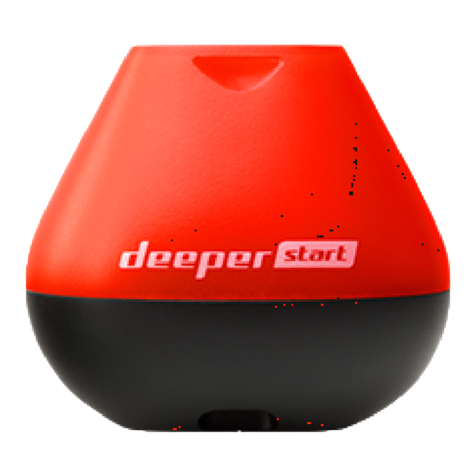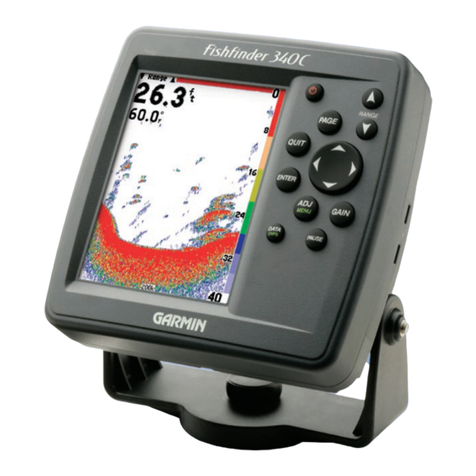Blueprint Subsea Starfish 453OEM User guide

StarFish Sidescan Sonar
453OEM System Manual


StarFish 453OEM
System Manual
3
Contents
1. Introduction ..............................................................................................................................................................4
2. Installation ................................................................................................................................................................5
2.1. Choosing A Mounting Location .........................................................................................................................5
2.2. Transducer Mounting & Sealing........................................................................................................................6
2.3. Circuit Board Mounting .....................................................................................................................................7
2.4. Power Supply Connection.................................................................................................................................8
2.5. USB Data Connection ........................................................................................................................................8
2.6. Transducer Connections ...................................................................................................................................9
3. Using The Sonar ......................................................................................................................................................10
3.1. Operation.........................................................................................................................................................10
3.2. Software Development Kit ..............................................................................................................................10
4. Understanding Sidescan Imagery ..........................................................................................................................11
4.1. What Is A Side-Scan Sonar?.............................................................................................................................11
4.2. What Does A Side-Scan Sonar Image Look Like?............................................................................................12
4.3. Calculating Depth Below The Sonar (Altitude)...............................................................................................12
4.4. Calculating The Distance To A Target .............................................................................................................13
4.5. Acoustic Shadows............................................................................................................................................13
4.6. Reflected Target Intensity ...............................................................................................................................14
4.7. Example Side-Scan Sonar Images...................................................................................................................15
4.8. Gain & Contrast Settings .................................................................................................................................16
4.9. Shallow Water & Channels ..............................................................................................................................16
4.10. Tips For Good Imagery ..................................................................................................................................17
6. Safety.......................................................................................................................................................................18
6.1. Electrical Safety ...............................................................................................................................................18
6.2. Operational Safety...........................................................................................................................................18
7. Care Of Your Starfish...............................................................................................................................................19
7.1. Operational Care .............................................................................................................................................19
7.2. Maintenance & Cleaning..................................................................................................................................19
7.3. Storage............................................................................................................................................................19
8. Troubleshooting .....................................................................................................................................................20
9. Product Support .....................................................................................................................................................21
10. Limited Warranty Policy .......................................................................................................................................22
11. Notices...................................................................................................................................................................23
12. Specifications........................................................................................................................................................24
12.1. Mechanical Drawings.....................................................................................................................................24
12.2. Technical........................................................................................................................................................25
12.3. Acoustic Beam Patterns ................................................................................................................................26

StarFish 453OEM
System Manual
4
1. Introduction
Thank you for purchasing the StarFish453OEM Seabed Imaging System, a revolutionary high definition side-scan
sonar system capable of producing near photographic quality sonar images of the seabed.
Whether surveying lakes, rivers or the open ocean for dive sites, submerged structures, shipwrecks or research
purposes, StarFish gives you the capability to capture detailed images of the seabed for work or play, making hi-
tech seabed imaging accessible to anyone.
The StarFish453OEM sonar is design for equipment manufacturers or those wishing to integrate a sidescan sonar
onto their own platform (such as ROV or AUV). The system comprises of two hull-mounted transducers that should
be mounted angled 30° down from the horizontal, and an electronics module with USB connection to a Microsoft®
Windows® based embedded PC.
The simple intuitive StarFish “Scanline” software makes seabed imaging extremely easy for novices and
experienced side scan sonar users alike, alternately an SDK is available that allows StarFish data to be captured
directly into your own application.
Before proceeding, we recommend that you read the safety, installation and operation guidelines in this user
guide in order to get full benefit from the features of the StarFish system.
We hope you get many years of trouble free use from your StarFish sonar. However, should you have any
difficulties please refer to the “Product Support” section at the end of this manual for details on how to obtain
technical support, upgrades and repairs.
Safety
Before installing and using this product, please read through the “Safety” section at the rear of this manual.
Throughout the documentation the following symbols are used to indicate special precautions or procedures:
WARNING!
This symbol indicates a warning you should follow to avoid bodily injury or damage to your equipment.
CAUTION
This symbol denotes precautions and procedures you should follow to avoid damage to your equipment.
NOTE
This symbol denotes special instructions or tips that should help you get the best performance from your system.

StarFish 453OEM
System Manual
5
2. Installation
2.1. Choosing A Mounting Location
Before you can start using the Starfish453OEM Sonar system in the field, you will need to mount the sonar
transducers to your underwater platform. Correct mounting of the sonar is essential in order to achieve the best
image results, and as each setup is different you should consider the following points when deciding on a suitable
mounting location…
Avoid creating acoustic shadows
The StarFish transducers contain transmitter and receiver elements that should be mounted horizontally and
angled 30° down from the horizontal-plane for optimal sea-bed coverage.
The transducers acoustically transmit sound in a “fan beam” of narrow width (refer to the specification of your
StarFish product for the exact width), but wide vertically, with most of the acoustic energy confined to the centre
60° of the beam.
The arrangement allows the StarFish to perform well in shallow water at long ranges, and see almost directly
below it, but incorrect placement on the hull/platform could cause “acoustic shadows” or “reflections” to be
produced features around them, such an ROV thrusters, AUV fins/dive-planes, umbilical cables etc.
Acoustic shadows will create blind spots in the sonar’s field of vision and may reduce its maximum working range.
Reflections from the hull may create a ‘ghost’ or mirror image of the opposite channel on the sonar display.
Reduce vulnerability to grounding
When mounting the sonar, ensure there is always a point on the hull/platform that is lower than the transducers
location. This will reduce the risk of damage to the transducer should you run aground or collide with any
submerged obstacle.
Position in relation to the platforms propulsion
Ideally the StarFish transducers should be mounted to the hull/platform in front of its means of propulsion (i.e.
propeller or thrusters), as these introduce small air-bubbles into the water which in-turn act as reflectors of sound
and degrade the range and quality of the sonar imagery.
If it is not possible to mount the transducers in front of the thrusters or propeller, efforts should instead be made
to mount the transducers lower than it, such that its turbulence does not obstruct the acoustic beams.
Avoid cavitation & turbulence
When mounting the transducers, it is important that a location is chosen that under normal conditions is known
to be free from turbulence and aeration. You should also ensure the transducer is positioned such that cavitation
and turbulence is minimised on the transmitter and receiver surfaces as this may distort or degrade the sonar
imagery.
Avoid mounting the transducers behind features on the hull/platform, such as rivets, strakes or steps, that may
introduce cavitation or turbulence into the water around them.

StarFish 453OEM
System Manual
6
2.2. Transducer Mounting & Sealing
The StarFish transducers should be mounted onto the hull of the vehicle (or subsea platform) using 2 M4 fixings,
with centres 381mm apart as shown in the diagram below.
For best acoustic performance, the transducers should be mounted such that they are angled 30° down from the
horizontal plane, as shown:
To ensure a waterproof connection, the cable boss protruding from the rear of the transducer is fitted with two
18.0mm 2.6mmO-rings. These should be greased with a small amount of suitable silicone lubricant and
inserted into a suitable machined hole on the mounting housing that ensures a waterproof piston-seal.
Alternately, a waterproof glad may be used to seal onto the cables that are potted into the rear of the transducer
housings.

StarFish 453OEM
System Manual
7
2.3. Circuit Board Mounting
The StarFish electronics can be mounted onto a base plate using 4 M3 fixings that locate into the notches on the
edge of the board (circled in blue below).
The should be stood off a base plate using spacers with a minimum height of 3mm.

StarFish 453OEM
System Manual
8
For best electrical performance, the electronic should be placed into an enclosed metal housing that is electrically
connected to the same Ground reference as the power supply input –this will reduce electrical noise and
interference that may appear on the sonar display.
2.4. Power Supply Connection
The StarFish electronics module has a 2.1mm DC input socket (labelled “J3”) that will accept voltages between
9V and 28V, and will require a supply capable of delivering 5W.
Typically, this means the StarFish will require just under 500mA at 12V, or just under 250mA at 24V.
The centre pin (tip) of the power connector is Positive, and the outside of the connector (ring) is Ground.
2.5. USB Data Connection
The PC running the Scanline software should be connected to the electronics module using “J2”, a Type-B USB
2.1 connector (bandwidth used is less than 12Mbps).

StarFish 453OEM
System Manual
9
2.6. Transducer Connections
The StarFish electronic circuit board is pre-fitted with the transducer cable loom connected to “J1”. Once the
transducers have been mounted and sealed into the housing, they should be connected as shown in the diagram
below to the electronics module:
The grey cables from the circuit board are labelled with “Port” and “Starboard” to indicate which transducer they
should be connected to. However, in case the labels are missing, the Starboard transducer should be connected
to the Yellow & Green wiring pair, while the Port transducer should be connected to the Red & Blue wires.
Wire
Function
Wire
Colour
Starboard
Connector Pin
Port
Connector Pin
J1
Connector Pin
Ground
Black
1
-
4
Not Used
2
-
-
Starboard Signal+
Yellow
3
-
6
Starboard Signal-
Green
4
-
5
Ground
Black
-
1
3
Not Used
-
2
-
Port Signal+
Red
-
3
1
Port Signal-
Blue
-
4
2

StarFish 453OEM
System Manual
10
3. Using The Sonar
3.1. Operation
Once the StarFish453 transducers and electronics module have been installed onto your platform, the system is
ready for use.
If this is the first time you’re using the StarFish system, it is recommended you install the “Scanline” software and
USB hardware drivers on your embedded PC before connecting the electronics module to it. Refer to the
accompanying “Scanline User Guide” for details on how to do this.
When using the StarFish453OEM system with “Scanline”, follow the connection and configuration instructions for
a StarFish 450 family device.
•Switch the DC power on to the StarFish electronics module
•When powered up, the “Power/Status Indicator” will illuminate and start to flash – indicating that the
Topside box has correctly initialised.
The “Activity Indicator” will not illuminate until the USB connection is made, Scanline is running and
configured correctly.
•Start the Scanline software or your application. When the software opens the data connection to the
StarFish electronics and starts the sonar “pinging”, the “Activity Indicator” will start to flash.
3.2. Software Development Kit
The StarFish Software Development Kit (SDK) can be downloaded from the Blueprint product website (see the
“Technical Support” section for details). The SDK contains the software libraries, drivers, utilities and
documentation to help you :
•Integrate the StarFish interface into your own application using the Windows API DLL.
•Diagnose USB connection issues within the Windows operating system.
•Diagnose operational issues with the StarFish hardware using the “StarFishTools” utility, including an
FFT spectral analyser mode to resolve electrical noise and interference issues.

StarFish 453OEM
System Manual
11
4. Understanding Sidescan Imagery
Interpreting side-scan imagery may seem difficult at first, but with practice and some knowledge of how the sonar
works, it doesn’t take very long for an operator to understand what the seafloor is doing below the sonar, and if
there are any targets on it.
Many people try to look at the pictures and understand them as you would a photograph, but this however is not
strictly the case. In the following sections, we will look at several example images, and see how information can
be obtained from them.
4.1. What Is A Side-Scan Sonar?
Sonar (SOund Navigation And Ranging) and echo-sounding technology dates back to the 1920’s, but it was only
in the early 1960's that Dr. Harold Edgerton (an electrical engineering professor at the Massachusetts Institute of
Technology) started to adapt his techniques on high-speed flash photography to acoustics, having concluded that
photography was not best suited to the murky conditions underwater.
By sending "flashes" of acoustic energy into the water and recording the echoes, Edgerton (who later worked with
underwater explorer Jacques Cousteau), developed a towed side-looking sonar that could create a continuous
image of the seafloor.
By transmitting a narrow fan-shaped acoustic pulse (ping) perpendicular to its direction of travel, the side-scan
sonar sends acoustic pulses outwards. The seabed and other objects reflect some of the sound energy back in the
direction of the sonar (known as backscatter), and the travel time of the returned pulse is recorded together with
its intensity.
As sounds travels at a known velocity (of approximately 1500 metres per second) through water, we can directly
relate the time we received an echo, to the range of the target that reflected it.
This scan-line of information is sent to a topside computer for
interpretation and display, and by stitching together data from
successive pulses, a long continuous image of the seafloor is created,
as the sonar is towed from the survey vessel.
As mentioned previously, your StarFish has two transducers
(transmitter and receiver elements) that are angled 30° down from
the horizontal, and acoustically transmit sound in a “fan beam” of
narrow width (refer to the specification of your StarFish product for
the exact width), but wide vertically with most of the acoustic energy
confined to the centre 60° of the beam.
This gives the StarFish the ability to see almost directly below it, to
just above the horizontal.
However, despite this field of vision, the StarFish cannot determine where a target lies vertically in its beam (i.e.
above or below it), as everything is translated to a planar 2D display.
For example, if there are two targets both 10 metres from the sonar (one horizontally level with it, and one directly
below it, and are received on the same channel) they would both appear at the same point on the sonar display,
as the display scale is based around time, and both echoes would arrive simultaneously.
With some experience though, image artefacts like “acoustic shadows” can help the operator make an educated
guess to the size of targets and sea-bed features.

StarFish 453OEM
System Manual
12
4.2. What Does A Side-Scan Sonar Image Look Like?
The figure below is a real image captured by a StarFish sonar, where each horizontal line is a representation of
time versus the intensity of the reflected echoes. The further something is away from the centre line of the display,
means the longer it took for the echo to be received.
In this figure, both the port (left) and starboard (right) channels are operating at the same time. The sonar is
positioned in the middle of the topmost line, and as the sonar is moved through the water the image will scroll
away from it as more data is added.
4.3. Calculating Depth Below The Sonar (Altitude)
A useful measure to know when using a side-scan sonar is the height above the seafloor, so a safe distance can be
maintained and hazards avoided.
Looking at the previous image, we can see a large black “hour-glass” shaped area in the middle of the display,
where no echoes have been received.
In fact this area is showing us the height the sonar is above the sea
bed.
As the figure opposite shows, the nearest object to the sonar will
always be the seabed below it (assuming a relatively flat seabed).
However, it will take some time for the “bottom echo” to be
returned, and as the display shows the received echoes from when
the transmission started, this area appears black.
Therefore, the narrower the band of black is, the closer the sonar is to the seabed –and as the image is built up
over time, if the sonar’s altitude changes we actually start to see the profile of the seabed that the sonar has
passed over.
This means in the figure above, the seabed gets shallower in the middle of the display, and then gets deeper again
at the bottom.
h

StarFish 453OEM
System Manual
13
4.4. Calculating The Distance To A Target
As mentioned earlier, the sonar display shows the recorded echoes over a period of time, and we have seen how
we can work out the depth below the sonar from this.
However, this also means that the range a target appears to be on
the display is not the distance it lies at from the sonar horizontally
across the seabed.
To understand why this is the case, consider the triangle shown in
the figure opposite.
As the sound waves travel from the sonar, they start to hit the
seabed, and each point of contact returns an echo along the
shortest path to the sonar.
To work out the actual distance at which a target lies, you need to use the mathematical formula (based on
Pythagoras’s theorem) …
22 HeightRangeDisplayedRangeActual
4.5. Acoustic Shadows
When sound from the sonar hits a submerged target with any
height above the seabed, an acoustic shadow will be cast away
from the sonar.
An experienced sonar operator can use the lengths of these
shadows, along with knowledge of the sonar altitude to get an
idea of the size and height of the object.
To help understand this, imagine you are in a darkened room, with a flashlight, standing above a ball. If you shine
the flashlight down on the ball, a small shadow is cast around it, while if you lie down level with the ball and shine
the light at it, a much longer shadow is produced stretching away from it.
This principle applies to side-scan sonar in a similar way; objects directly beneath the sonar will appear to have
very small shadows, while objects at greater distances will have longer shadows because they are being
illuminated (acoustically) on their side.
The shadows of targets can be elongated further if the towing altitude of the sonar is decreased or if in shallow
water.
Displayed
Range
Height
Actual Range
Acoustic Shadow

StarFish 453OEM
System Manual
14
4.6. Reflected Target Intensity
To complete our understanding of the basics of sonar imagery, we need to consider the brightness information
(intensity of echo) shown on the sonar display.
As with a surface reflecting light, different surface textures and materials of targets have different acoustic
reflective properties.
Typically, the more the density of the target differs from that of water, or the more rigid its material is, the more
sound is reflected back:
•Any target with a gas in (such as air) will act as an almost perfect reflector for sound, and will show as
the brightest colour in the palette.
•Muddy or silted lake and sea beds will generally show up as a low-intensity background colour, as mud
is a good sound absorber and contains water.
The example image below shows several bright targets of interest…
Taking what we already know about sonar imagery into account we can interpret the following…
•White ‘dots’, without any form of shadow are most likely either flat hard targets on the bottom or large
mid-water fish (with their air-filled swim-bladder showing up on the sonar).
•At the bottom of the image we can see a bait-ball of fish –identifiable as large spherical structure that
protrudes above the seabed profile (there is a faint and fragmented shadow extending away from it,
implying it is not a single solid target).
•On the right of the image, we can see several vertical curved white lines. These are most likely the hulls
of moored boats, and close to them we can see the square outlines of the concrete mooring blocks.
•At the top of the image, there is a large target. As it appears on both channels, and we can see its profile,
we know the sonar has passed directly over it. The bright geometric echoes on it indicate it is probably
man-made, and there is an acoustic shadow visible on the right portion of it, showing it has height.
It is most likely this is the wreck of a sunken vessel.

StarFish 453OEM
System Manual
15
4.7. Example Side-Scan Sonar Images
Lake Bed
Scan showing boat moorings at the bottom (concrete
blocks in craters of silt).
The dark area on the left channel is the shoreline.
A boat with wake is visible on the right.
At the top of the right channel, it can be seen that the
bottom has a rockier texture, and appears brighter
than the silt in the rest of the image.
Cable Car Ferry
Lake bed beneath a cable-hauled car ferry.
The two cables are visible above the bottom, crossing
beneath the sonar.
The movement of the cables has exposed the bedrock
of the lake, causing a brighter reflection.
The grooves are visible on the centre profile on the
lakebed, and the shore and slip-way are visible in the
top left.
Marina
Shallow water with moored boats. The bright white
targets of the hulls are visible, above “craters” in the
silt, caused by the movement of the mooring cables.
Note the large acoustic shadow on the left channel,
caused by a raised area of the seabed being almost
level with the sonar in the shallow water.
Coral Reef
Horizontal image orientation showing a scan over
coral reefs.
At the extreme right of this image, ripples in the sand
are visible, while each coral outcrop has clearly visible
shadows.
Note how close the sonar came to a small outcrop at
the centre of the image!

StarFish 453OEM
System Manual
16
4.8. Gain & Contrast Settings
When operating your sonar, the adjustments you will make to the gain and contrast controls are critical in
achieving good side-scan imagery. This section examines the function and purpose of these controls…
Gain
The software gain control is similar to the volume control on a home hi-fi system, or the brightness control on a
television.
The gain control sets how the incoming scan-lines of data (from the sonar hardware) map onto the display’s colour
palette.
•Increasing the gain value will make all areas of the display image appear brighter, while decreasing it
will make the whole image appear darker.
•For general operation, a gain value of 30% (-28dB) is recommended.
Contrast
The function of the contrast control is slightly more complex to understand than that of the gain control.
The contrast value sets the palette range that the incoming signal will be stretched or shrunk to fit.
•A lower contrast value means that the image will transition from dark to bright colours more quickly
than a higher contrast value.
•For general operation, a contrast value of 30% (38dB) is recommended, but can be reduced to 25% to
enhance shadows and submerged targets.
The best way to understand the operation of the Gain and Contrast controls is to experiment with these values
while scanning the sonar over a known area of seabed.
Generally, having set the operational range of the sonar, you should then set the gain to a level where the
background noise is just visible. This should ensure that quiet signals are visible at the extremities of the display,
whilst the central mid-water areas and seabed profile have good definition.
Then, when scanning, adjust the contrast to give the desired sharpness of targets –lowering the contrast will
make echoes appear brighter, while keeping shadows dark.
4.9. Shallow Water & Channels
When operating in shallow water and channels, you may experience a “ghosting” effect caused by acoustic
returns from previous sonar “pings” still bouncing between targets and the sonar receivers.
To reduce these effects, use a larger “range” on the sonar display, which should have the effect of slowing the
“ping rate” and allowing time for these echoes to dissipate.
In shallow water, you may also see distortion on long range
targets, caused by “multi-path” phenomenon – where sound is
reflected between the seabed and surface before hitting the
target.
Due to surface waves and chop, the effect can manifest its self as
ripples on distant targets.

StarFish 453OEM
System Manual
17
4.10. Tips For Good Imagery
Vessel Speed
When operating the StarFish, remember that it is “pinging” at a fixed rate (depending on range). The faster you
move the sonar transducers over the seabed, the more compressed images will appear on the display.
For long ranges, try to operate at speeds between 1 and 3 knots, while shorter ranges can be used with speeds of
3 to 6 knots.
Water Depth
The depth of water beneath the sonar is an important factor to consider when interpreting heights of submerged
objects from their acoustic shadows.
In shallow water, acoustic shadows from targets appear very elongated (like shadows cast from objects at sunset),
while in deep water the seabed will appear more as a “birds-eye” type view with minimal shadows.
Mounting Position
The position and method of mounting the transducers on the hull/platform is probably one of the biggest factors
in determining overall image quality. As discussed in previous sections, the transmitter and receiver faces on the
transducer should…
•Have no obstructions in their acoustic beams that may cause shadows or reflections.
•Be clear of any turbulence or cavitation from the hull in front of them.
•Be clear of turbulence or aeration caused by the platforms thrusters/propeller.
Boat Navigation
When surveying an area, think about the course you will steer your platform/vessel. Try to divide the area into a
grid of long straight runs, with 180° turns at the end.
Remember that as the sonar turns, the acoustic beams from the inside of the turn will overlap, while the outside
ones will be covering more seabed –consequently the imagery produced will appear distorted and hard to
interpret in these areas.
Try and avoid the aerated water left in the wake of other boats, as this will be acoustically visible for some time
should you cross through it with your sonar.
Waves, Wake and Surface Chop
As some of the acoustic energy transmitted from the StarFish transducers is beyond its 60° vertical beam-width,
it is possible that it may be reflected off the underside of the surface of the water if you are operating close to the
surface. This may cause the sonar imagery to appear be distorted due to waves and surface chop on the water.
Remember that when operating the StarFish sonar your own safety is paramount and should not be
compromised trying to achieve good sonar imagery.

StarFish 453OEM
System Manual
18
6. Safety
6.1. Electrical Safety
•The AC power adaptor and electronics modules are NOT protected against the ingress of water, so take
care to avoid exposing the unit to sources of conductive liquids. Dry wet hands before handling the AC
power adaptor or surface control box.
•Do not attempt to disassemble or service this product yourself (outside the scope described in this
manual). Contact StarFish technical support for any maintenance, spares or repair work required.
•Do not overload a mains supply outlet, extension cord or adapter as this may result in electric fire or
shock.
•Do not modify the power cord or plug.
•Do not place the AC adaptor or power cord near any heat sources that may melt the protective
insulation.
•Do not use this product if any of the cabling, or housings of its component parts appear to be damaged
or compromised for the ingress of water.
•Do not use (and ensure the product is unplugged) in situations where a power-line surge may occur
(such as a lightning storm), or if the product is not used for a prolonged period of time.
•Ensure that the power supply has suitable earthing and electrical shock risk is minimised through the
use of fusing and/or residual-current-detection (RCD) devices where appropriate.
6.2. Operational Safety
•Do not rely on the product to necessarily represent the immediate sub-surface conditions below the
mounting platform, and as such this product should not be used as a direct means of avoiding
submerged objects, shallow water & grounding, collisions with other vessels, boat damage or personal
injury. If you are in doubt about any of these hazards, always operate at reduced speeds, and proceed
with caution.
•Do not rely on this product as a navigational aid.
•Do not allow the sonar transducer cable to obstruct or present a hazard to other personnel on the deck
area or passage-ways of the boat. Use the provided cable-tie to coil and secure any surplus cable.
•Do not rely on the connection between the electronics box and the transducer cable, as a means of
securing the sonar to the boat. The sonar transducer head should be fixed directly to the boat hull.

StarFish 453OEM
System Manual
19
7. Care Of Your Starfish
7.1. Operational Care
In addition to the points highlighted in the “Safety” section, please observe the additional precautions…
•Do not operate the product near a source of heat that may cause the operational temperature
parameters to be, or stack other heat generating equipment on top of the unit.
•If not rigidly mounted in your system, always use the electronics module on a stable, non-slip, rigid, flat
and lint-free surface.
•Make sure the product is more than 10cm away from any other appliance that may be susceptible to
electromagnetic interference.
7.2. Maintenance & Cleaning
When you have finished using your StarFish sonar, you should…
•Disconnect the product from the power supply before attempting any maintenance or cleaning.
•Remove any weed, or other detritus, from the sonar transducers and cables, that may have been
collected during its operation.
Additionally, please observe the following precautions for cleaning and maintenance…
•Do not clean with solvents, and only use a damp cloth on the exterior of the unit.
•Do not undertake maintenance of the unit, outside the scope of that defined within this manual, unless
instructed to do so by Technical Support.
•Do not insert extraneous object (metal or other alien substance) into the unit or any of its connector
apertures.
7.3. Storage
When storing or shipping the StarFish system, please observe the following…
•Avoid excessively bending or kinking the transducer cables (below a radius of 30mm), as this could
reduce its operational life.
•Avoid excessive and large fluctuations in temperature.
•To prevent corrosion, remove any salt or other residues from the product before storage out of the
water.
•Store in a well-ventilated enclosure after use, to allow any moisture on system components to
evaporate naturally.
•Ensure no point-load is exerted on the acoustic transducers.

StarFish 453OEM
System Manual
20
8. Troubleshooting
Below is a table of common problems and solutions, but if you have a problem that cannot be solved from the
table below, or an issue that is not covered, please contact StarFish technical support.
Note: For software issues and problems, please refer to the “Scanline User Guide”.
Problem…
Solution(s)…
Electrical interference
This is most commonly seen as bright small snow-like dots over the image –
usually with some form of regular repeating pattern.
The most common cause is interference from other high-current switching
electrical devices (such as mains inverters, or motors) connected to the same
power source as the top box electronics module.
Try methodically turning off other electrical devices to find the cause, or
running the StarFish from its own dedicated supply (or battery).
Acoustic noise
This is most commonly seen as large stripes or pulses of varying brightness
over the image, usually with some form of regular repeating pattern.
Try to identify and, where possible, remove the source of the acoustic noise.
Most commonly, your platform, or other vessels, may have an echo-sounder
that is running at a frequency close to the operating band of the StarFish.
Image ghosting or mirroring
This problem may occur if the StarFish transducers are receiving echoes
from features on the hull/platform it is mounted on.
Try repositioning the transducers so the acoustic beams are not obstructed
from the transmitter faces.
This problem can also occur in shallow water, where the high-intensity
transmission from one transducer is being received by the other. If possible,
use the software to display only a single channel (and prevent transmissions
from the other); this will reduce the inter-channel cross-talk.
Table of contents
Other Blueprint Subsea Sonar manuals

